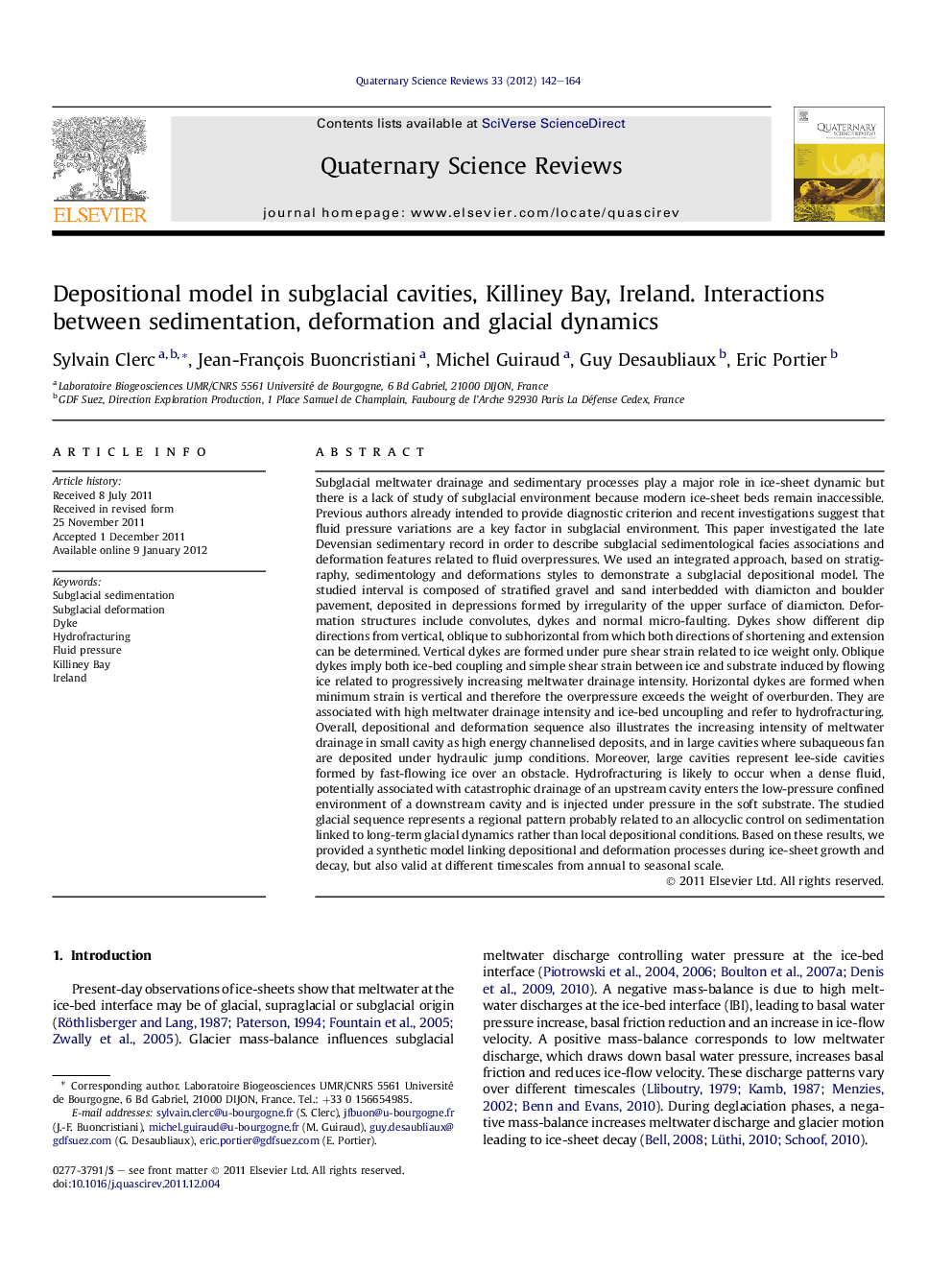| کد مقاله | کد نشریه | سال انتشار | مقاله انگلیسی | نسخه تمام متن |
|---|---|---|---|---|
| 4735810 | 1640901 | 2012 | 23 صفحه PDF | دانلود رایگان |

Subglacial meltwater drainage and sedimentary processes play a major role in ice-sheet dynamic but there is a lack of study of subglacial environment because modern ice-sheet beds remain inaccessible. Previous authors already intended to provide diagnostic criterion and recent investigations suggest that fluid pressure variations are a key factor in subglacial environment. This paper investigated the late Devensian sedimentary record in order to describe subglacial sedimentological facies associations and deformation features related to fluid overpressures. We used an integrated approach, based on stratigraphy, sedimentology and deformations styles to demonstrate a subglacial depositional model. The studied interval is composed of stratified gravel and sand interbedded with diamicton and boulder pavement, deposited in depressions formed by irregularity of the upper surface of diamicton. Deformation structures include convolutes, dykes and normal micro-faulting. Dykes show different dip directions from vertical, oblique to subhorizontal from which both directions of shortening and extension can be determined. Vertical dykes are formed under pure shear strain related to ice weight only. Oblique dykes imply both ice-bed coupling and simple shear strain between ice and substrate induced by flowing ice related to progressively increasing meltwater drainage intensity. Horizontal dykes are formed when minimum strain is vertical and therefore the overpressure exceeds the weight of overburden. They are associated with high meltwater drainage intensity and ice-bed uncoupling and refer to hydrofracturing. Overall, depositional and deformation sequence also illustrates the increasing intensity of meltwater drainage in small cavity as high energy channelised deposits, and in large cavities where subaqueous fan are deposited under hydraulic jump conditions. Moreover, large cavities represent lee-side cavities formed by fast-flowing ice over an obstacle. Hydrofracturing is likely to occur when a dense fluid, potentially associated with catastrophic drainage of an upstream cavity enters the low-pressure confined environment of a downstream cavity and is injected under pressure in the soft substrate. The studied glacial sequence represents a regional pattern probably related to an allocyclic control on sedimentation linked to long-term glacial dynamics rather than local depositional conditions. Based on these results, we provided a synthetic model linking depositional and deformation processes during ice-sheet growth and decay, but also valid at different timescales from annual to seasonal scale.
► A sedimentological and deformation analysis is performed on glacial sediments.
► A sand and gravel unit is interbedded with diamictons and a boulder pavement.
► Several generations of dykes cross-cut successive depositional sequences.
► Dykes are related either to ice-bed coupling or hydrofracturing by dense fluid.
► Sediments are deposited and deformed in subglacial cavities.
Journal: Quaternary Science Reviews - Volume 33, 6 February 2012, Pages 142–164